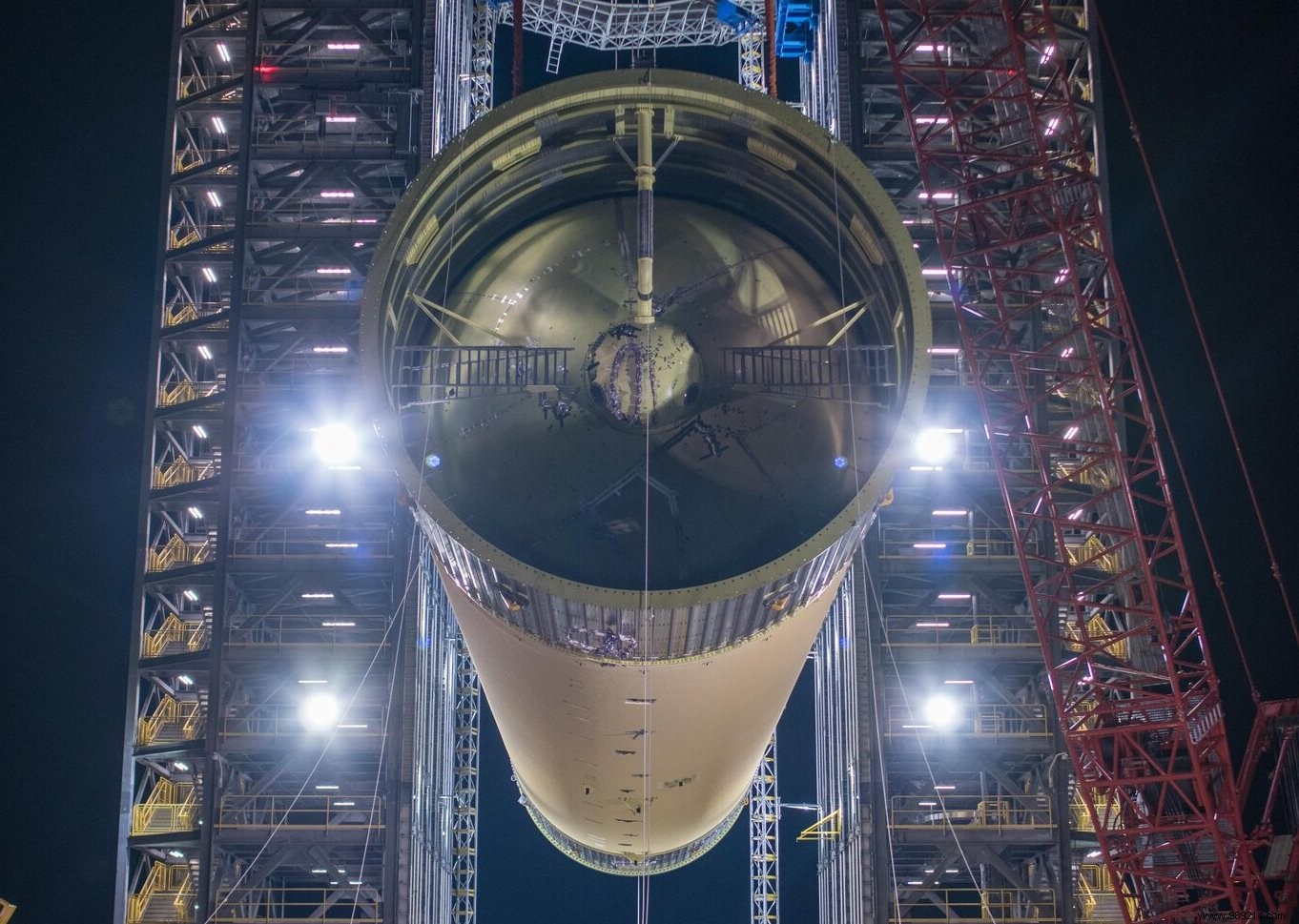NASA's Space-Launch System (SLS), which was supposed to launch the first Artemis mission in November, won't take flight until next year , according to a NASA source.
The SLS, the new super-heavy launcher developed by NASA, is the one that will send the next crews to the Moon, and why not later to Mars . Its first flight was normally scheduled for next November, as part of the Artemis I mission, whose objective will be to send an unmanned Orion capsule around the Moon.
Publicly, NASA still clings to this deadline. Unofficially, it will probably be postponed to next summer, according to Ars Technica , citing a NASA source.
A few weeks ago, technicians and engineers finished stacking the SLS rocket, also integrating the side boosters into the structure. A load was then placed atop the rocket to simulate the presence of the Orion spacecraft. Currently, NASA and its contractors are working on launcher vibration tests (modal tests). These aim to better understand the difference between the natural vibrations generated by the rocket itself and those caused by external forces. The collected data will be fed into the flight software.
These tests, which were originally scheduled to end in July, are still underway in the assembly building at the Kennedy Space Center (Florida), according to Kathryn Hambleton, public relations of the agency. In other words, NASA will soon be two months behind the initial goals, and more tests are planned.
Once these vibration tests are completed, the mass simulator will be stripped from the rocket to be replaced by the real Orion ship. The entire structure will then be flown to the Cape Canaveral launch pad for a "wet dress rehearsal". During this test, liquid hydrogen and oxygen will be loaded into the rocket and part of the actual countdown will be simulated. On the other hand, the motors of the vehicle will not be triggered. This test will probably take place in November or December.

Then the vehicle will be taken back to the assembly building for final checks. Assuming all goes according to plan, the SLS rocket could now launch early next spring. On the other hand, if wet dress rehearsal testing identifies any new issues, the launch will likely be delayed until next summer. A schedule update will be offered after modal testing and stacking of Orion on top of the rocket.
That the Artemis I mission could not be launched in 2021 was expected. We should therefore expect the rest of the calendar to be postponed as well. The Artemis II mission, which was to send a first crew around the Moon from the Apollo missions, will therefore not take place in 2022, but probably in 2023/2024. The Artemis III mission, which will again see humans set foot on our satellite, will be scheduled next, but not before 2025.